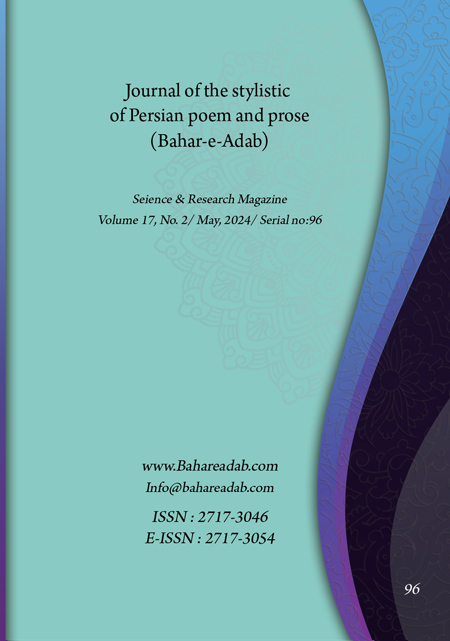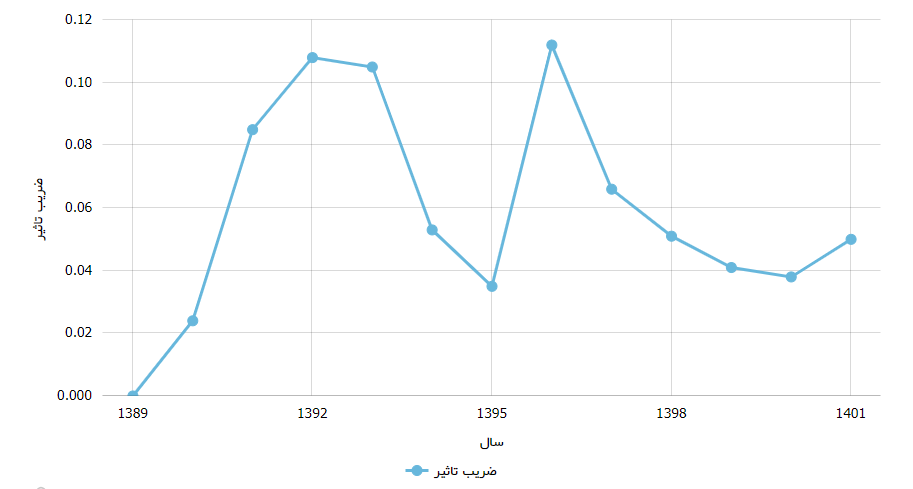Journal ID
Contact Us
address: Tehran Post Box 1558-14665Email: info@bahareadab.com
About the Journal
The Journal of the Stylistic of Persian Poem and Prose (former Bahar-e-Adab) is an open-access monthly publication focusing on the specialized field of Persian prose and verse stylistics. Founded by Dr. Omid Majd, this private monthly magazine published its first issue in the autumn of 2008 and, with the valuable scientific credentials of esteemed members of the editorial board, as well as the rich and valuable articles submitted by distinguished researchers, it achieved a valuable scientific-research rating in the summer of 2009 after a year and a half. This journal follows the Committee on Publication Ethics (COPE) and complies with the highest ethical standards by ethical laws. read more about this publicationJournal Metrics
| Publication start year | 2008 |
| ISC Quartile | Q2 |
| ISC | 0.152 |
| Issue per year | 12 |
| Published articles in year | 180 |
| Acceptance rate (%) | 18.6 |
| Research papers | 1,781 |
| Article view | 3,302,535 |
| PDF download | 1,483,040 |
| No. of pages | 37,401 |
| No. of references | 28,496 |
-
1 . Investigating conversation style in Anvari’s poem
-
Seyyedeh Samira Seyyed Khoshk Bijari (Author in Charge)
- Page 1-17
-
-
2 . Stylistic study of the manuscript of the Kermani Vali 's Divan
-
Masoumeh Vafaeinia , Reza Ashrafzadeh (Author in Charge), Javad Mehraban Ghezelhesar
- Page 19-39
-
-
3 . Reflection of Imam Mohammad Al-Ghazali's thoughts in the Sanai Hadiqah
-
Seyyed Ali Moradi (Author in Charge), Seyyed Ahmad Parsa
- Page 41-57
-
-
4 . Textual and stylistic study of Shams al-Lali Manuscript in rhetoric
-
Mojtaba Saadat , Maryam Mahmoudi (Author in Charge), Mehrdad Chatraei
- Page 59-73
-
-
5 . Theatrical capabilities of Ferdowsi's Shahnameh (with a case study of the story of Bijan, Manijeh and Siavash)
-
Omal-Banin Dashti Rahmatabadi , Mahboubeh Zia Khodadadian (Author in Charge), Batool Fakhraslam , Mehdi Norouz
- Page 75-92
-
-
6 . Stylistic study and analysis of the manuscript of "Meraat Al-Salkin" by "Mir Baba Darvish Naqshbandi"
-
Mohammad Taghi Maghsoudi , Ahmad Reza Yelmehaha (Author in Charge)
- Page 93-111
-
-
7 . Qajar Khavar Divan and its style features
-
Zahra Madahi , Hossein Azarpayvand (Author in Charge), Saeed Khairkhah
- Page 113-133
-
-
8 . Semantic coherence in the romantic lyric of Hossein Monzavi
-
Zahra Talebloo , Mohsen Zolfaghari (Author in Charge), Hojjatullah Omid Ali , Zahra Rajabi
- Page 135-154
-
-
9 . “Introducing Saeed Naqshband-e Yazdi along with the stylistic features of his Collection of Poems”
-
Fatemeh Sadat Taheri (Author in Charge), Razieh Rezaei Tafti
- Page 155-180
-
-
10 . Specialized Monthly of Poetry, Order and Prose (Spring of Literatur) Existential imagery in the stories of Gholam Hossein Saedi
-
Mahmoud Bashiri , Niloufar Ansari (Author in Charge)
- Page 181-195
-
-
11 . Analysis of Ashura style in Tabari history based on Randall's theory of fictional intelligence
-
Zahra Azizi Dehno , Soraya Ghotbi (Author in Charge), Farideh DavoudiMoghadam
- Page 197-215
-
-
12 . Extensive use of the Allegory and its novelties; One of the features of the Khosronameh
-
Neda Najafi , Manouchehr Akbari (Author in Charge)
- Page 217-232
-
Search in Articles
Indexing and Abstracting





